Introduction
Product Overview
{{section_header}}{{section.name}}{{/section_header}}
Get to know the Panasonic RP-DJ1205
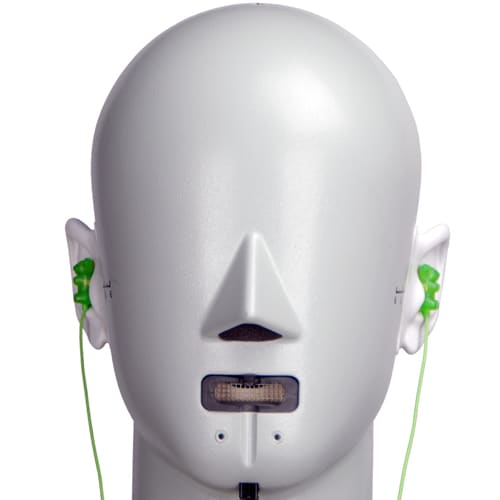
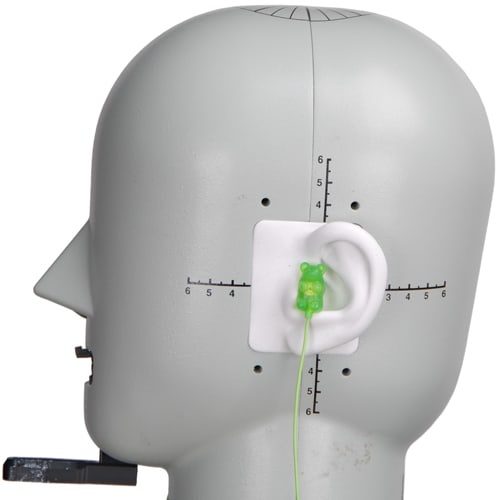
Speakers
{{section_header}}{{section.name}}{{/section_header}}
Gaze upon the speaker element of the {{product.name}} and... well, see mesh. Really, we don't recommend removing the cloth protecting the speaker, but it's an effective guard against sweat and grime from working its way into the inner workings of your headphones.
Back
{{section_header}}{{section.name}}{{/section_header}}
The back of the {{product.name}}s prominently display dark grey plastic with divoted edges, most likely meant to elicit an association with the other famous Technics products: turntables.
Band
{{section_header}}{{section.name}}{{/section_header}}
A little on the bizarre side, the band of the {{product.name}}s can stow each ear cup individually if you unlock the pivot point.
Cable
{{section_header}}{{section.name}}{{/section_header}}
As these cans were designed with the DJ in mind, the cable itself is interesting in that it's versatile: while it measures in at 9.8 feet, the cord is wound tightly so that when there isn't much tugging force, it coils up and stays at 3 feet long. It also hangs from the right ear cup, which is a little unusual, but not radically different or anything.
At the end of that cable is a 1/8th inch plug, threaded to allow the 1/4th inch adapter to screw onto the termination.
The cable guards on the {{product.name}} are made of a thick rubber, so you shouldn't have to worry so much about the casual wear and tear.
In the Box
{{section_header}}{{section.name}}{{/section_header}}
Along with headphones, the packaging to the {{product.name}}s includes a 1/4th inch adapter, a carrying pouch, and assorted documentation.
Durability
{{section_header}}{{section.name}}{{/section_header}}
Despite carrying a high price point, the {{product.name}}s are surprisingly not that durable. While they do offer fairly decent protection from casual wear and tear, there are lots of moving parts made of plastic that isn't as robust as one would hope. Don't worry about putting them in a bag, but definitely take care to limit their drops.
Aesthetics
{{section_header}}{{section.name}}{{/section_header}}
Using a divoted texture on the sides, and a flat back, it's obvious that Panasonic is trying to make the {{product.name}} fit aesthetically with the rest of the Technics line of products, most famously its turntables. It may not look like the most attractive pair of cans out there, but the mental association is very easy to make.
Frequency Response
{{section_header}}{{section.name}}{{/section_header}}
Despite the strange dip in the mids that brings the response outside of our ideal limits, the shift isn't exactly all that jarring. Overall, it does what a DJ would typically look for: it bumps bass up so music can be heard over their monitors, and it prevents the higher notes from overpowering the rest of the music. However, this may not be for you. For example, the upper third of a piano and guitar will sound quieter to you, dampening that sick guitar solo near the end of your favorite song.

Click here for more information on our frequency response test.
Distortion
{{section_header}}{{section.name}}{{/section_header}}
If you hear distortion, it's coming from something else, and not your headphones. Very minor measure here.
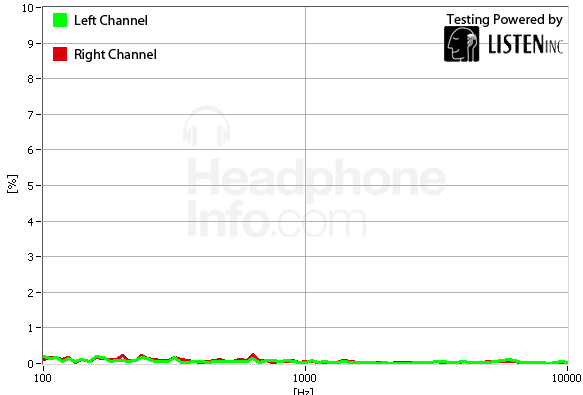
Click here for more information on our frequency response test.
Tracking
{{section_header}}{{section.name}}{{/section_header}}
Despite the several imperfections here, the worst tracking errors are less than 3dB, meaning that you probably won't hear one side louder than the other unless your music is mixed that way.
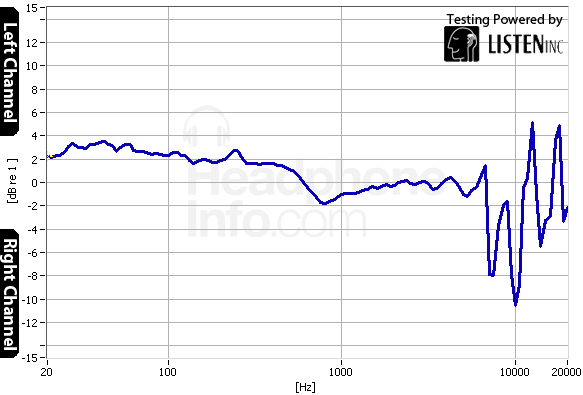
Click here for more information on our frequency response test.
Isolation
{{section_header}}{{section.name}}{{/section_header}}
If you're in an environment that has a lot of high-end noise, the {{product.name}}s actually block out quite a bit of that, thought they let in low frequencies almost unimpeded. Car and truck engines will be especially annoying to you, but there isn't much that can be done about that.

Click here for more information on our isolation test.
Leakage
{{section_header}}{{section.name}}{{/section_header}}
Due to the fact that it's difficult to get a good seal on your ears, the {{product.name}}s can be expected to leak quite a bit of sound if you listen at a high volume. Be wary of annoying people around you with your music, especially if you don't want anyone to know that you're listening to anything that would embarrass you.
Click here for more information on our leakage test.
Maximum Usable Volume
{{section_header}}{{section.name}}{{/section_header}}
Despite their ability to crank music up to 119.19dB (higher than most MP3 players can output), we caution all of our readers to keep their volume levels quite a bit lower, as you can seriously damage your hearing unintentionally.
Click here for more on our maximum usable volume test
Short-Term Use
{{section_header}}{{section.name}}{{/section_header}}
While comfort is largely subjective, we are obligated to tell you ahead of time that the {{product.name}}s have a notably high clamping force if you have a larger noggin. While most people find relief in adjusting the band, those of you with bigger brain cages might find the level of force the {{product.model}}s apply on your pinna to be uncomfortable. If you have a smaller head, this might still be true, but most comfort issues will disappear with an appropriate adjustment.

Extended Use
{{section_header}}{{section.name}}{{/section_header}}
Over time, the fit doesn't change all that much unless the band adjustment is too small for you, in which case the force will make you more uncomfortable over time. Similar marks here.
Customizability
{{section_header}}{{section.name}}{{/section_header}}
Aside from attaching a 1/4th inch adapter and the ability to move each ear cup individually, there really isn't much one can do to customize the function or appearance of the headphones. That's not inherently a bad thing, though, it's just something to be aware of.
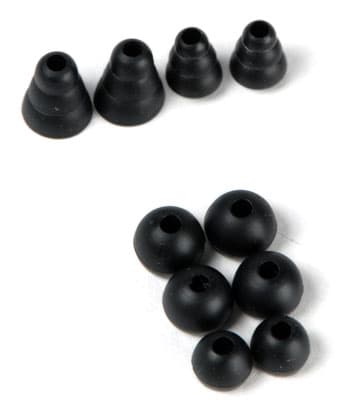
Cable Connectivity
{{section_header}}{{section.name}}{{/section_header}}
Able to be used as-is with 1/8th inch jacks, or with an adapter for 1/4th jacks, the {{product.name}}s are versatile enough to be used with just about any source you can find. The expanding/contracting coiled cable is also a nice touch, as it can be as short as 3 feet long, or 9.8 feet if pulled taut.
Portability
{{section_header}}{{section.name}}{{/section_header}}
Though most on-ear and over-ear headphones are not that portable, Panasonic gives owners of the {{product.model}} some pretty good options for porting their headphones around. The {{product.name}}s are light, and stow into an included carrying pouch, allowing it to be taken wherever you find yourself.
Maintenance
{{section_header}}{{section.name}}{{/section_header}}
Unfortunately there really aren't that many options to repair or fix your headphones should the {{product.name}}s break. You can wipe down the mesh over the speakers with an alcohol-damped cloth, but that's about it.
Design
{{section_header}}{{section.name}}{{/section_header}}
Both are on-ear headphones, and much of their design differences are primarily aesthetic. However, the Sennheisers have a lot more replaceable parts, and are generally more durable.
Frequency Response
{{section_header}}{{section.name}}{{/section_header}}
Even though both of them have their underemphasis problems, the Sennheisers keep a flatter response, and smaller error. The {{product.name}}s emphasize bass a bit more, though.
Distortion
{{section_header}}{{section.name}}{{/section_header}}
The {{product.name}}s have less distortion, but that of the HD 25-1-IIs isn't enough to write home about.
Tracking
{{section_header}}{{section.name}}{{/section_header}}
Neither have perfect tracking, but the errors present in both are barely audible if at all.
Isolation
{{section_header}}{{section.name}}{{/section_header}}
The HD 25-1-IIs have a wider range of attenuation, and a rather even level to boot.
Comfort
{{section_header}}{{section.name}}{{/section_header}}
Comfort is largely subjective, and as there are no glaring problems with each, whichever headphone is more comfortable is more dependent on your own head. Consequently, the only way you're going to know which is better is to head to a brick and mortar store and try them on for yourself!
Verdict
{{section_header}}{{section.name}}{{/section_header}}
This is one of those cases where there's a clear advantage dependent on your intended use. Namely, the Sennheiser cans do very well for casual listeners and for basic monitoring, and the Panasonics do well for a DJ.
Design
{{section_header}}{{section.name}}{{/section_header}}
Given that the older Panasonics are of an over-ear nature, it's not surprising that there are some design differences, but overall they are very similar in function and in aesthetic.
Frequency Response
{{section_header}}{{section.name}}{{/section_header}}
The {{product.model}}s have the better frequency response hands-down, as they preserve more of the upper end.
Distortion
{{section_header}}{{section.name}}{{/section_header}}
Neither has significant troubles with distortion.
Tracking
{{section_header}}{{section.name}}{{/section_header}}
Strangely enough, both have a very similar tracking response, but the {{product.name}} has fewer noticeable channel preference errors.
Isolation
{{section_header}}{{section.name}}{{/section_header}}
The isolation of the {{product.name}} is slightly better in the mid range and lower end.
Comfort
{{section_header}}{{section.name}}{{/section_header}}
While comfort is very subjective, those of you with larger noggins will find the clamping force of both headphones to be a bit much, though the {{product.name}} is not as bad in this regard. See if you can't try each on before making a decision if you've narrowed down your choices between these two.
Verdict
{{section_header}}{{section.name}}{{/section_header}}
Newer isn't always better, but in this case it is. With better performance across the board, the {{product.name}}s offer a decent upgrade in not only performance but portability, but only for those who like on-ears. If you don't like that type of headphone, you may want to keep looking.
Design
{{section_header}}{{section.name}}{{/section_header}}
We don't need to tell you that over-ear headphones are different, but the ATH-M50s are stacked. With exceptional cup movement and durability, the Audio-Technica cans have been popular for quite a while now among many users.
Frequency Response
{{section_header}}{{section.name}}{{/section_header}}
Though they simultaneously emphasize bass and treble frequencies more than the {{product.name}} does, the ATH-M50s do have a better frequency response overall.
Distortion
{{section_header}}{{section.name}}{{/section_header}}
The distortion measure on the Audio-Technica cans is extremely low, though neither set of cans really has any troubles here.
Tracking
{{section_header}}{{section.name}}{{/section_header}}
Though neither is perfect here, the channel preference errors are not as bad with the ATH-M50s.
Isolation
{{section_header}}{{section.name}}{{/section_header}}
Both headphones attenuate about the same amount of sound.
Comfort
{{section_header}}{{section.name}}{{/section_header}}
If you have a larger head, the ATH-M50s are much more accomodating, as they have lower clamping force overall. Still, comfort is largely subjective! See if you can't try each on before you plunk down the cash if you are having trouble deciding.
Verdict
{{section_header}}{{section.name}}{{/section_header}}
The ATH-M50s offer better performance across the board for less money, so it's hard to argue with them for now. Still, they may not be ideal for everybody. Users who want to take their cans in the outside world may find the ATH-M50s to be too clunky to carry around, meaning the {{product.name}}s will be the better bet.
Conclusion
{{section_header}}{{section.name}}{{/section_header}}
For all their minor faults, the {{product.name}}s are actually very well-engineered headphones for the DJ crowd and listeners on the go. With a huge load capacity and decent audio performance, these are a worthy successor to the headphones they replace in Panasonic's lineup.
They're not perfect, but what is? Still, it's a bit dismaying to see cheaper plastic in the construction of these headphones, as that raises some significant durability concerns. It's made worse by the fact that there are a lot more moving parts than normal, meaning that there are a lot more potential points of failure. Be careful with these cans.
If you're looking for headphones to take to a gig or studio, the {{product.name}}s definitely warrant a look. Not only is the cable very forgiving of tugging, but the headphones themselves are tailor-made to compliment the other Technics products by Panasonic. The {{product.model}}s' suggested retail price is $229.95.
Meet the tester
A seasoned writer and professional photographer, Chris reviews cameras, headphones, smartphones, laptops, and lenses. Educated in Political Science and Linguistics, Chris can often be found building a robot army, snowboarding, or getting ink.
Checking our work.
Our team is here for one purpose: to help you buy the best stuff and love what you own. Our writers, editors, and lab technicians obsess over the products we cover to make sure you're confident and satisfied. Have a different opinion about something we recommend? Email us and we'll compare notes.
Shoot us an email


